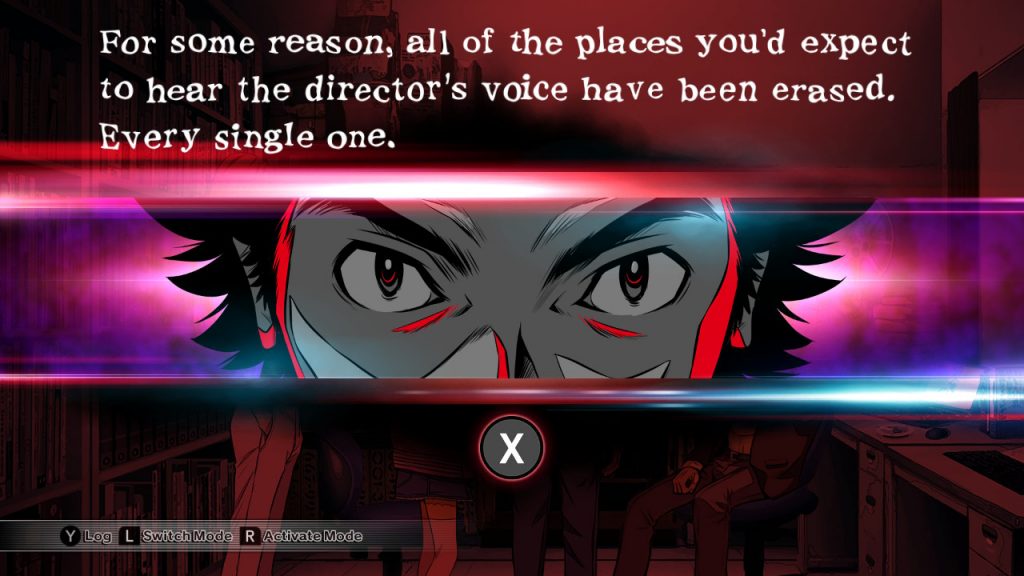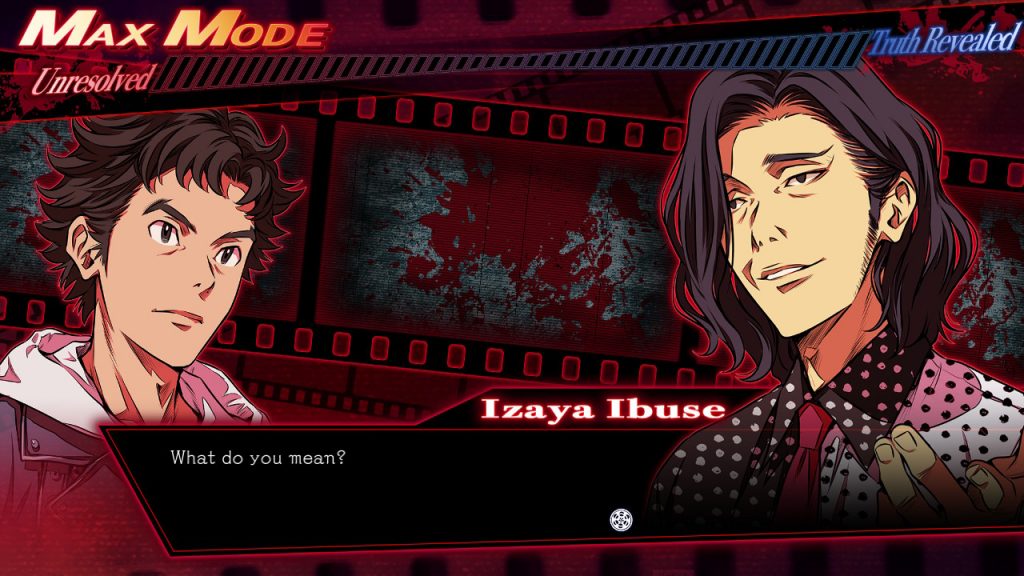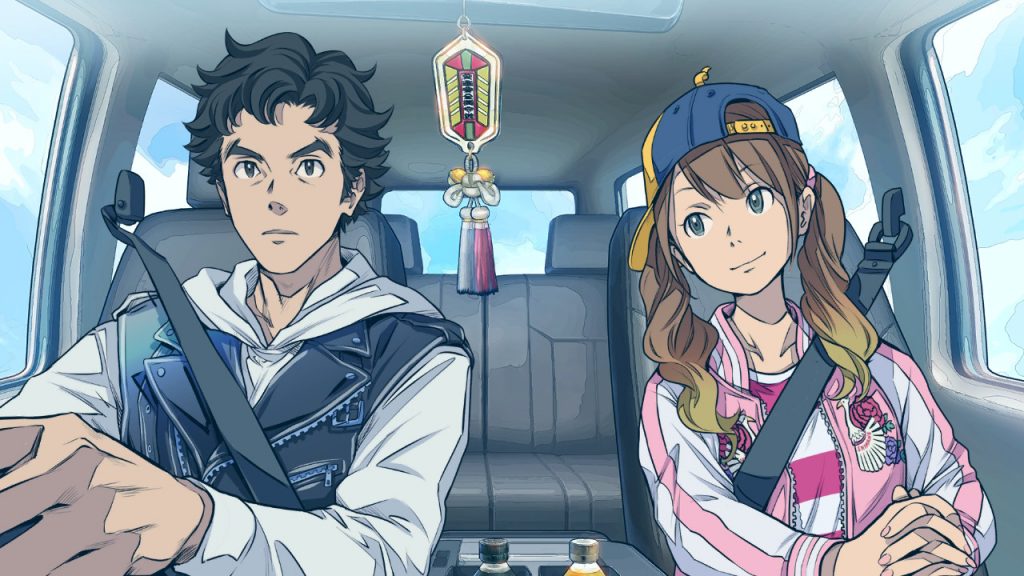A lot of fun, anime-inspired games have come out of Japan in recent years. From JRPGs to visual novels, there is a lot to choose from. Root Film is one such game. It is a visual mystery novel by Kadokawa Games and serves as a sort of sequel to the game Root Letter. It doesn’t follow the same characters or plot, but it is made by the same company and takes place in the Shimane prefecture in Japan. There are similar elements and it is the same type of mystery game. However, there are, of course, many differences between the two games.
Both games follow a mystery, though. In Root Letter‘s case, the mystery involves the protagonist/player as he searches for a pen pal that went missing long ago. In Root Film, there are multiple mysteries that weave together. This made it different than its predecessor in a way I actually liked more.
We will cover the similarities and differences between the two games as we go.
The Set-Up
The starting scene was something dark but topical. And it is a very important piece of the overall puzzle, so it’s important not to forget. We start out in the thoughts of a girl who just fell from a building. She needs help but no one does anything. They just gather around to take photos and stare at her as they talk amongst themselves. It becomes clear to her that no one will help and that they are only there for the spectacle. Then she dies. This is something that very much reflects a deep issue in our modern society, particularly an event that happened in the US recently (after the game was released). That social commentary was a sad but intriguing way to start the game off.

We then cut over to Rintaro (Max) Yagumo and his assistant, Aine Magari, as they edit a horror film they are working on. There is upbeat, slice-of-life music playing, and the mood is suddenly completely different. We actually don’t even revisit that opening scene until the end of the game.
I noticed right away that the art style varies a bit from Root Letter, but the tone is the same. They use elements of filmmaking in Root Film that make it unique to its subject matter, and they did that very well (and in a fun way).
Game Play
As with every type of mystery visual novel game, you must try things until you progress. If you are new to this type of game, know that you might need to keep clicking on the same person or thing in order to move forward in the game. Just speaking to one character in a scene, for example, isn’t enough. You must make sure you’ve tried everything before moving forward. Sometimes things need to be done in a specific order as well, so you must try different things (such as going to another location and then maybe going back again and talking to the same person or a newly appeared character).
There are many parts to this game, but what makes it unique (and even more different from Root Letter) is that you actually play some of the game as a different character, solving separate mysteries as Max Yagumo’s relative, Riho. There are five parts in Yagumo’s storyline and two in Riho’s. You find out they are related early on, as both have what they call “synesthesia,” which they can’t control but helps them remember parts of the mysteries they are solving. They mention that it runs in their family.

These characters are both working on their own respective films when they end up recording the disastrous events they became entangled in. This footage helps them/you get the proof they need to solve the crimes in question throughout the game.
There is a “Max Mode” in this game, which they also had in Root Letter, but it is different in Root Film. There were film effects used when in these modes, such as there being a little movie clock counting down before you throw your accusation at someone. It has a completely different mechanic for this investigative mode than in Root Letter, but I personally liked it more. The other one was annoying because you had to click on the option you wanted at the exact right time for no reason. In this one, in Max Mode, the closer you get to the truth being revealed, the more bars you’ll get on a meter. Conversely, you will get bars toward the issue being unresolved above your character if things go south.

What I Liked
I loved the art, the music, and the ambiance of the game. Visual novels like this one are wonderful ways for anime and manga fans to enjoy an immersive experience in the genre. Most of Root Film is pretty slice of life, despite the mysteries and bad events that occur. This gives the player some breathing room to relax and enjoy other aspects of the game. However, after the big climax, it is all suspense. And that was my favorite part.
In both games in this series, the player gets to see different parts of the Shimane prefecture and learn some of its history. I really liked this element both in Root Letter and Root Film. It brings you right into Japan, and you can learn little fun facts in ways that don’t seem forced or out of place. It all fits right into the storyline.
In regards to gameplay, it is a little slow at times, particularly in the middle, but it picks up rapidly after Riho’s chapters. It really gets exciting during Yagumo Parts 4 and 5. That being said, the overall pacing was still better than other games in the genre, such as the Famicom games. Both Root Letter and Root Film were more modernized in gameplay, both in that regard and in general, with storylines that were more exciting while also being more fast-paced and less tedious.
Whoever wrote the overall story in this game was a genius. I’m sure that there were probably multiple people who contributed to the storyline, but it made an okay game into a great one. If you are looking for a game to challenge you, this probably isn’t it. But if you’re looking for an interactive experience with great mysteries and a well-crafted story, you should definitely play through Root Film.

I wasn’t expecting the two big twists at all. They did a really good job with it. But that’s all I’ll say, as not to spoil it for anyone else. I was able to easily guess many elements of the smaller mysteries within the game, but they did a great job misleading the player/me with the most important ones. By the end, it reminded me of a Korean drama (a very high compliment in the realms of drama and mystery writing).
The ending was really good (I actually cried by the end of the credits, but it was also very late when I finished it because I couldn’t put it down–another good sign). This is something I liked more about Root Film than Root Letter. I don’t like when visual novel games make me play multiple times (or force me to look up cut scenes) in order to get a satisfying ending. I had to do that with Root Letter, and it just felt like a sneeze that couldn’t come out. With Root Film, you get the whole story and a sweet, satisfying ending (make sure you watch through the ending credits) during the first playthrough.
What I didn’t like
While the ending and overall story was extremely well done, there were definitely lulls in the game. I found it difficult to be excited during the middle of it. And I never like the tedious aspects of these types of games.
You don’t really get to use your own decision-making during a large chunk of the game. I think you’re able to do this more in Root Letter and in other detective visual novels (particularly horror ones). But in a lot of Root Film, you’re more just guided along and watching it take place. This is another reason this game is more of an experience that is worth enjoying, rather than being seen as a game you must fight to complete.
For a lot of the game, you can choose where you go and when but that’s pretty much it, other than the order of questions in the interrogations (which is important). So, during these parts, it’s definitely more of a visual novel than a game you must navigate. However, you get more opportunities to think of what to do on your own toward the end of it.
A minor annoyance that was a little noticeable was that there were quite a few typos throughout the English text. It wasn’t too distracting, but sometimes it led to a slight moment of confusion. Overall, it wasn’t a big deal, though, and there was never a time when the typo made things unclear.
Conclusion
Overall, I really liked Root Film. The story was very well thought out, and though the gameplay was sometimes slow, it had good pacing overall, especially for this genre. And the last half of the game really sucks you in. I was playing for hours nonstop the day I completed it (I don’t recommend powering through if it’s past one am by the time you’ve reached the big breaking point because you won’t be able to stop).
If you liked Root Letter, you’ll likely enjoy this one, too. It doesn’t follow the same characters or storyline, so it’s an entirely different experience, but there are similar elements. You can play it regardless of whether or not you’ve played the first game.
You can buy the game for the PS4 or the Nintendo Switch (I played it on the latter).
Have you played Root Film? Tell us what you thought of it in the comments below or on Twitter!






